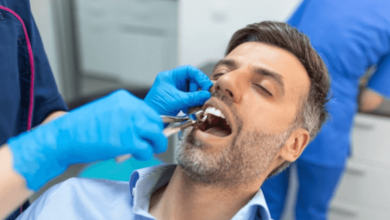Can Botox Help TMJ? What San Diego Patients Need to Know

If you’re dealing with TMJ issues, you might be wondering if Botox could be a solution. This treatment, usually known for its cosmetic benefits, is gaining traction as a way to alleviate jaw pain and related symptoms. In San Diego, many patients are curious about how Botox works for TMJ and whether it’s the right choice for them. Let’s break down what you need to know about this treatment option.
Key Takeaways
- Botox can help relieve TMJ pain by relaxing jaw muscles.
- Treatment typically lasts 3 to 4 months before needing a follow-up.
- Not everyone is a candidate; consult a dentist in San Diego, CA for advice.
- Costs can vary widely, and some insurance may cover it.
- Be aware of potential side effects, though they are usually mild.
Understanding TMJ Disorders and Their Symptoms
What Is TMJ?
Okay, so what is TMJ? Well, TMJ stands for temporomandibular joint. It’s basically the hinge that connects your jaw to your skull. This joint lets you talk, chew, yawn – all those essential movements. When people say “TMJ,” they’re often referring to pain or problems in this area, though the more accurate term is actually TMD, or temporomandibular joint disorder.
Common Symptoms of TMJ Disorders
TMJ disorders can manifest in a bunch of different ways, which can make them tricky to diagnose. Here are some common symptoms:
- Jaw pain or tenderness
- Clicking or popping sounds when you open or close your mouth
- Difficulty chewing or pain while chewing
- Headaches, especially in the temples
- Earaches
- Locking of the jaw, making it difficult to open or close your mouth
It’s not fun, and it can really mess with your day-to-day life.
Causes of TMJ Pain
So, what causes all this TMJ trouble? There isn’t always one clear answer, but several factors can contribute:
- Genetics: Some people are just more prone to TMJ disorders.
- Jaw injuries: A blow to the jaw can definitely trigger problems.
- Teeth grinding or clenching (bruxism): This puts a lot of stress on the joint.
- Arthritis: Both osteoarthritis and rheumatoid arthritis can affect the TMJ.
- Stress: Stress can lead to muscle tension, which can worsen TMJ symptoms.
It’s important to remember that TMJ disorders are complex, and often a combination of these factors is at play. If you’re experiencing TMJ pain, it’s best to see a dentist or doctor to get a proper diagnosis and discuss treatment options.
How Botox Works for TMJ Treatment
Mechanism of Action
So, how does botox actually work when it comes to TMJ? It’s pretty interesting, actually. Botox, or botulinum toxin, works by blocking nerve signals to the muscles. When injected into the jaw muscles affected by TMJ, like the masseter and temporalis, it prevents them from contracting as forcefully. This relaxation reduces the tension and clenching that contribute to TMJ pain. Think of it like hitting the pause button on those overactive muscles.
Benefits of Botox for TMJ
What are the upsides of using botox for TMJ? Here’s a quick rundown:
- Pain Reduction: Many people report a noticeable decrease in jaw pain and headaches.
- Muscle Relaxation: Botox helps relax the tense muscles that cause TMJ symptoms.
- Improved Jaw Function: By reducing muscle tension, it can improve jaw movement and reduce clicking or popping.
- Non-Surgical: It’s a non-invasive alternative to surgery, which is a big plus for many.
Botox for TMJ in San Diego offers a way to manage symptoms without resorting to more invasive procedures. It’s not a cure, but it can provide significant relief and improve quality of life for those struggling with TMJ disorders.
Duration of Effects
Okay, so how long does this botox thing actually last? The effects of botox for TMJ aren’t permanent. Typically, the relief lasts for about 3 to 6 months. After that, the nerve signals gradually return, and muscle activity resumes. To maintain the benefits, repeat injections are usually needed. It’s something to keep in mind when considering botox for tmj san diego as a treatment option.
| Feature | Duration |
| Pain Relief | 3-6 months |
| Muscle Relaxation | 3-6 months |
| Repeat Treatment | Every 3-6 months |
Who Is A Good Candidate For Botox?
Botox isn’t for everyone, but it can be a game-changer for some TMJ sufferers. It’s all about figuring out if it’s the right fit for you.
Ideal Patient Profile
So, who typically benefits most from Botox for TMJ? Generally, it’s people who:
- Have tried other treatments (like physical therapy, mouthguards, or pain meds) without much success.
- Experience frequent and intense jaw pain, headaches, or muscle spasms related to TMJ.
- Don’t have underlying medical conditions that would make Botox unsafe (more on that later).
- Understand that Botox provides temporary relief and may require repeat treatments.
It’s important to have realistic expectations. Botox isn’t a cure-all, but it can significantly reduce pain and improve quality of life for the right person.
Consultation with a Dentist
This is a MUST. You can’t just decide you want Botox and go for it. A qualified dentist needs to evaluate your specific situation. During the consultation, they’ll:
- Examine your jaw, muscles, and bite.
- Ask about your symptoms, medical history, and previous treatments.
- Determine if Botox is a suitable option for you.
- Explain the procedure, potential risks, and expected outcomes.
Alternative Treatment Options
Botox isn’t the only game in town. Before jumping to injections, it’s worth exploring other avenues. Some common alternatives include:
- Mouthguards: These can help prevent teeth grinding and clenching, which often contribute to TMJ pain.
- Physical Therapy: Exercises and stretches can strengthen jaw muscles and improve range of motion.
- Medications: Pain relievers, muscle relaxants, or anti-inflammatory drugs can provide temporary relief.
- Lifestyle Changes: Stress management techniques, dietary adjustments, and avoiding excessive chewing can also make a difference.
Your dentist can help you weigh the pros and cons of each option and develop a treatment plan that’s tailored to your needs.
Cost Considerations for Botox Treatment
Average Treatment Costs
Okay, so let’s talk money. Botox for TMJ isn’t exactly cheap, but it’s also not the most expensive treatment out there. Generally, you’re looking at a range of $300 to $800 per treatment session. This can change depending on a few things, like how many units of Botox you need and where you go to get it done. It’s a good idea to call around to a few different dentists in San Diego to get an idea of the going rate.
Insurance Coverage Options
Now, the big question: will insurance help you out? It’s kind of a mixed bag. Some insurance plans do cover Botox for TMJ, especially if it’s considered medically necessary (like, you’ve tried other treatments and they haven’t worked). But, a lot of plans don’t, or they require a bunch of paperwork and pre-authorization. Definitely call your insurance company and ask specifically about Botox for TMJ. Don’t be afraid to push them on it – sometimes you have to be persistent!
Factors Affecting Pricing
So, what makes the price go up or down? Here’s a quick rundown:
- Number of Botox units: The more you need, the more it costs.
- Dentist’s experience: A more experienced dentist might charge more.
- Location: Prices can vary depending on where the office is located in San Diego.
- Additional fees: Some offices might have consultation fees or other charges.
It’s important to get a clear, written estimate before you commit to anything. Make sure you understand exactly what you’re paying for, and don’t be afraid to ask questions. You should also ask about payment plans or financing options, as some offices offer those to help make the treatment more affordable.
Potential Risks and Side Effects of Botox
Common Side Effects
Okay, so Botox for TMJ can be pretty helpful, but like anything, it’s not without its potential downsides. Most of the time, the side effects are pretty mild and don’t last too long, which is a relief. The most commonly reported issues include headaches, feeling a bit nauseous, or even flu-like symptoms. Think of it like a minor bug bite, that’s how some people describe the injection itself. You might also see some redness or bruising around where you got the shot, but that usually clears up pretty quickly. Some people also get a temporary droop in their eyelid, which, yeah, sounds a little scary, but it’s usually temporary.
Rare Complications
While most side effects are mild, there are some rarer complications to be aware of. One thing that’s been reported is a “fixed” smile, which can last for a couple of months. This happens because Botox can sometimes affect the muscles around your mouth, making it a little harder to move them normally. Also, if you get too much Botox around the mouth, it could lead to drooling, which is definitely not ideal. It’s also possible, though not common, for your body to develop antibodies to Botox, which could make future treatments less effective. That’s why doctors usually try to use the lowest dose possible and space out the treatments as much as they can.
Post-Treatment Care
After getting Botox for TMJ, there are a few things you should keep in mind to make sure everything goes smoothly. First off, try not to rub or massage the injection sites, because that could cause the Botox to spread to other muscles. Your doctor might also tell you to stay upright for a bit and avoid strenuous activity for a little while. Most people can get back to their normal routine pretty quickly, but it’s always a good idea to ask your doctor about any specific restrictions. And if you notice anything weird or concerning, don’t hesitate to give them a call. Better safe than sorry, right?
It’s important to remember that Botox injections should be avoided if you’re pregnant, nursing, or lactating. Always discuss your full medical history with your dentist or doctor before undergoing any treatment to ensure it’s the right choice for you.
Finding a Qualified Dentist in San Diego
Finding the right dentist in San Diego, CA, for TMJ treatment is important. You want someone who knows their stuff and can help you manage your pain effectively. It’s not just about finding any dentist; it’s about finding the right dentist.
Importance of Specialized Care
TMJ disorders can be complex, and not all dentists have the training or experience to treat them effectively. Seeking a dentist with specialized knowledge in TMJ disorders is important for getting an accurate diagnosis and appropriate treatment plan. A general dentist might be able to identify some issues, but a specialist will have a much better understanding of the nuances of TMJ and related conditions. They’ll also be more familiar with the latest treatment options, including Botox.
Questions to Ask Your Dentist
When you’re looking for a dentist to treat your TMJ, it’s a good idea to ask some questions. Here are a few to get you started:
- What experience do you have treating TMJ disorders?
- What treatment options do you offer for TMJ?
- Are you familiar with Botox for TMJ treatment, and what is your experience with it?
- What are the potential risks and side effects of the treatments you recommend?
- What is the estimated cost of treatment, and what payment options are available?
Asking these questions can help you feel more confident in your choice of dentist and ensure that you’re getting the best possible care.
Local Resources for TMJ Treatment
Finding a qualified dentist san diego ca can take some research. Here are a few places to start:
- Your primary care physician: They may be able to recommend a dentist or specialist who treats TMJ disorders.
- Online directories: Websites like the American Academy of Orofacial Pain can help you find specialists in your area.
- Dental schools: If there’s a dental school nearby, they may have a TMJ clinic or be able to recommend qualified dentists.
Don’t be afraid to call around and ask questions. The more information you have, the better equipped you’ll be to make an informed decision about your TMJ treatment. Finding the right dentist can make a big difference in managing your pain and improving your quality of life.
Patient Experiences and Testimonials
Success Stories
Hearing from others can really help when you’re thinking about a treatment like Botox for TMJ. It’s not just about the science; it’s about real people getting real relief. I’ve talked to a few folks around San Diego who’ve tried it, and their stories are pretty encouraging. One woman mentioned she’d been dealing with jaw pain for years, and after Botox, she could finally eat without discomfort. Another guy said his headaches, which he thought were just stress-related, turned out to be from TMJ, and Botox made a huge difference. It’s these kinds of stories that show the potential of Botox as more than just a cosmetic fix.
Before and After Results
Seeing is believing, right? While everyone’s experience is different, some patients have shared their journeys, and the changes can be pretty noticeable. It’s not always about dramatic physical changes, but more about the improvement in quality of life. For example, some have shown how their jawline softened as the muscles relaxed, but the real difference is in their smiles – less pain, more comfortable movement. It’s important to remember that results vary, and what works for one person might not work for another. But these visual and experiential changes can offer a glimpse of what’s possible.
Long-Term Outcomes
So, what happens after the initial treatment? That’s a big question for anyone considering Botox for TMJ. From what I’ve gathered, the long-term outcomes depend a lot on individual factors and follow-up care. Some people find that the effects last for several months, and they need regular treatments to maintain the relief. Others might experience a more lasting improvement, especially if they combine Botox with other therapies like physical therapy or lifestyle changes. It’s not a one-size-fits-all solution, and it’s important to have realistic expectations. Here’s a quick rundown of what some patients have reported:
- Reduced frequency of headaches
- Decreased jaw pain intensity
- Improved range of motion in the jaw
It’s worth noting that long-term use of Botox can sometimes lead to muscle weakening over time, so it’s something to discuss with your dentist. They can help you weigh the pros and cons and develop a treatment plan that’s right for you.
Final Thoughts on Botox for TMJ Relief
So, can Botox really help with TMJ? For many folks in San Diego, it might just be the answer they’ve been looking for. If you’ve tried other treatments and still feel that jaw pain or tension, Botox could be worth considering. It’s quick, often effective, and can provide relief for several months. Just remember, it’s not for everyone, so chatting with a qualified dentist about your specific situation is key. If you’re curious about how Botox can fit into your TMJ treatment plan, don’t hesitate to reach out to a local provider. They can help you figure out if it’s the right move for you.
Frequently Asked Questions
What is TMJ?
TMJ stands for temporomandibular joint, which connects your jaw to your skull. Problems with this joint can cause pain and discomfort.
How can Botox help with TMJ?
Botox can relax the muscles around the jaw, reducing pain and tension. This helps people who suffer from TMJ disorders feel better.
How long do the effects of Botox last for TMJ treatment?
The effects of Botox for TMJ usually last about 3 to 4 months. After that, you may need another treatment to keep feeling good.
Is Botox safe for everyone with TMJ?
Not everyone is a good candidate for Botox. It’s important to talk to a dentist to see if it’s the right choice for you.
What does Botox for TMJ treatment cost?
The cost can vary, but it generally ranges from $300 to $800 per treatment. Check with your insurance to see if they cover it.
Are there side effects to using Botox for TMJ?
Some people may experience mild side effects like headaches or bruising at the injection site, but these usually go away quickly.




